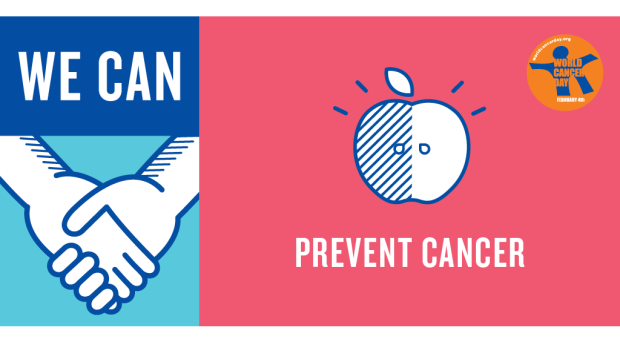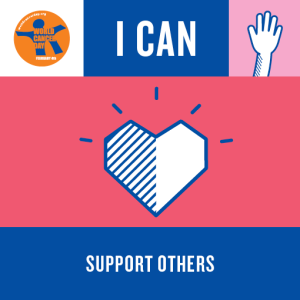
Despite promising advances in cancer treatment, mortality due to the disease remains very high. Killing around 8.2 million people in 2012, with over 14 million newly diagnosed cases, cancer is the leading cause of death worldwide.*
Most of us know someone who has suffered from or still struggles with cancer, and news of cancer-related deaths is frequently covered in the media. Only a couple of weeks ago, David Bowie died of liver cancer followed by Alan Rickman just a few days later, who died of pancreatic cancer. Both died at the age of 69.
It’s estimated that the annual cancer burden may increase to even 23 million new cases by 2030. The top 5 cancer killers are lung (1.59 million deaths in 2012), liver (745 thousand), stomach (723 thousand), colorectal (694 thousand), and breast cancer (521 thousand).
To get as many people as possible around the globe to talk about cancer on 4 February.
Objective of World Cancer Day
A number of risk factors are known to contribute to cancer, and while we can’t change some of these, like aging or family history, we can try to control an array of the other lifestyle-related risk factors: tobacco, alcohol, diet, obesity, sunlight overexposure, to name just a few.
That’s why it’s vital “to get as many people as possible around the globe to talk about cancer on 4 February”, which is the key objective of the annual World Cancer Day.
Cancer research and the impact on public health
Cancer research is arguably well-funded (compared to many other diseases), but the underlying question has always been how much does society actually benefit? An economic analysis by Jonathan Grant and colleagues published in BMC Medicine showed that the return on investments in cancer research has been significant. Though lagged in time, it’s actually economical to spend money on cancer research to ‘save’ on future costs of treating cancer.
Learning about genetic changes in cancer…
It has got to be a priority to ensure that more women can access gene testing and lifesaving preventive treatment, whatever their means and background, wherever they live.
Angelina Jolie
In general, cancer is caused by specific changes in our genes and we may inherit mutations increasing our susceptibility to cancer. The most prominent example are harmful mutations in BRCA1 or BRCA2 genes, which predispose carriers to a very high breast and ovarian cancer risk.
Angelina Jolie in her public announcement explained that she had opted for a preventive double mastectomy to drastically reduce her cancer risk. It triggered the so-called ‘Angelina effect’, an increase in admissions to family history and genetic testing centers, as published in Breast Cancer Research.

Recent advances in next-generation sequencing (NGS) give access to the vast information on individual gene changes, which in turn enables personalized cancer treatment. In an editorial for our article collection ‘Spotlight on prostate cancer’, Sigrid Carlsson and Andrew Vickers indicate that such change in approach is happening now for prostate cancer.
But are we ready to use it in routine oncology practice? Cancer research experts shared their remarks in a forum article, agreeing that NGS may be helpful in identifying candidates for clinical trials, though, as indicated by Mark Robson, it may not yet be useful in everyday clinical practice.
Can diet and exercise be the key to avoiding preventable cancers?

A review published recently in BMC Medicine identified a list of foods that might reduce risk and progression of prostate cancer. What’s interesting is that it overlapped to a great extent with principles of the Mediterranean diet, which has been shown to be beneficial in avoiding progression of prostate cancer. Reports showing beneficial effects of this dietary modification looked as well at other cancer types, such as hepatocellular carcinoma (the most common liver malignancy), stomach, colorectal, pancreatic, and breast cancer.
A recent meta-analysis took into account the relevant studies of cancer patient cohorts and the levels of physical activity before cancer diagnosis. It confirmed that the more physical activity we do, the higher the chances of overcoming the disease and the lower the risk of dying of cancer.

As we already know, eating healthy foods and being physically active aids in maintaining a healthy weight. The good news is that overall this also helps to prevent cancer, as obesity has been listed as another cancer risk factor. The prevalence of breast cancer diagnosis in men has rapidly increased over recent years; a hypothesis has been put forward that suggests a rise in obesity may play a role in this surge.
A number of studies evaluated if in general healthy lifestyle patterns help reduce cancer risk. For example, a large cohort study provided evidence that following a healthy diet and maintaining a healthy weight, being non-smoker and reducing alcohol consumption decreases the risk of developing stomach cancer. Another study in postmenopausal women has shown that adhering to the American Cancer Society Nutrition and Physical Activity Cancer Prevention Guidelines reduced the risk of all types of cancer.
In the light of the advances in cancer research, we encourage you to slow down for a while and spend some time during World Cancer Day to reflect on what actions are within your reach to contribute to fighting cancer. ‘We Can. I Can.’

* Cumulative for all types of cancer.
One Comment